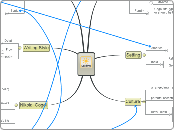av Mimi Zhang för 11 årar sedan
1442
Aboriginal Spirituality: Rituals
Various life-cycle and seasonal rituals highlight the deep spiritual and cultural beliefs of First Nations and Aboriginal communities. Birth and naming ceremonies focus on bestowing a name that reflects the child'









